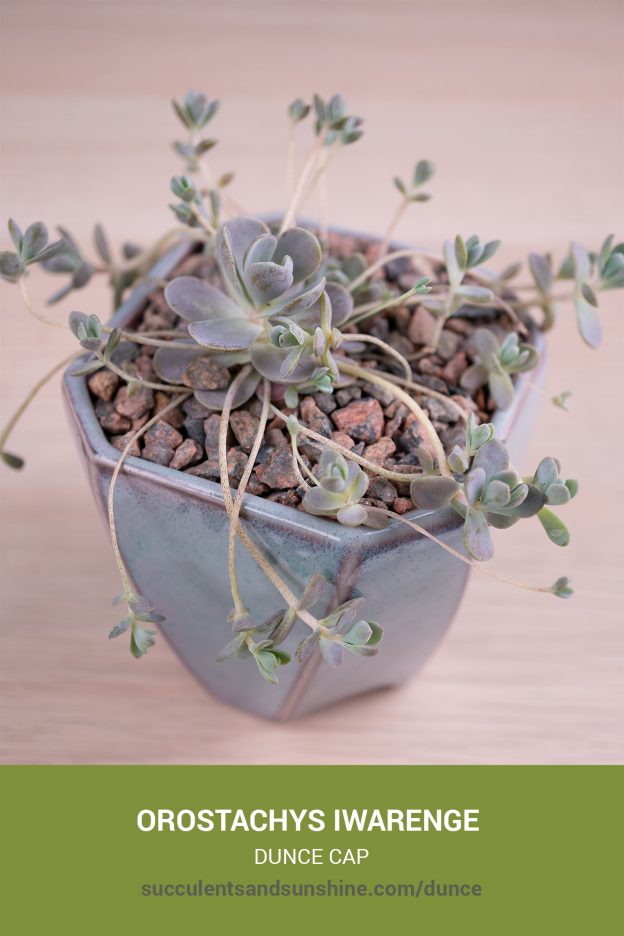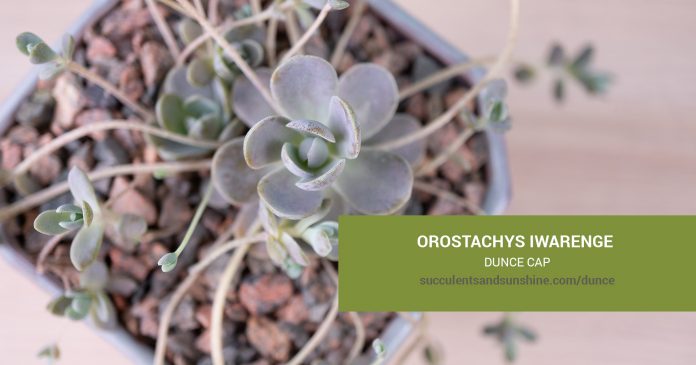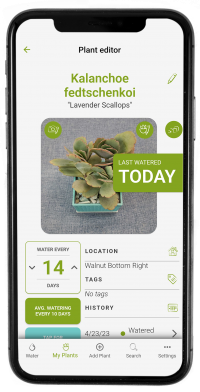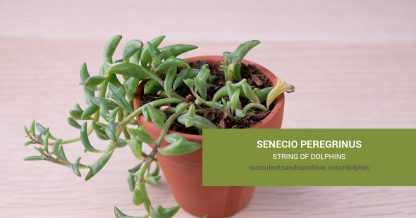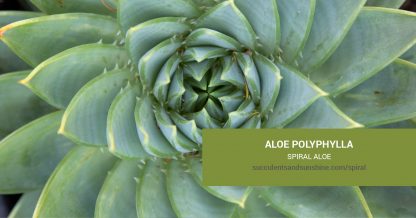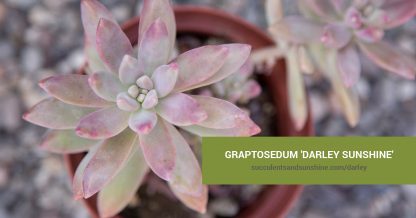Care and Propagation Information
General Care for Orostachys iwarenge “Dunce Cap”
Orostachys iwarenge “Dunce Cap” adds excellent ground cover to succulent gardens. If grown in container gardens, its offsets trail down. “Dunce Cap” grows in mats, but then as it matures, the rosettes grow taller into a fuller cone shape.
Watering
Orostachys iwarenge “Dunce Cap” has typical watering needs for a succulent. It's best to use the “soak and dry” method, and allow the soil to dry out completely between waterings. It does not do well in high humidity.
Where to Plant
“Dunce Cap” is not cold hardy, so if you live in a zone that gets colder than -10° F (-23.3° C), it's best to plant this succulent in a container that can be brought indoors and placed under a grow light.
Plant in an area of your garden that gets 6 hours of sunlight a day.
How to Propagate Orostachys iwarenge “Dunce Cap”
Orostachys iwarenge “Dunce Cap” is a prolific propagator. It can be easily propagated from offsets or seeds.
Offsets
“Dunce Cap” will produce small plantlets on long, thin stems. Remove the offsets with a sharp, sterile knife or scissors. Allow the offsets to dry for one to two days before laying on well-draining soil.
Seeds
After several years of growing, “Dunce Cap” will produce small yellow flowers. After blooming, the seeds can be collected and sown in a well-draining soil. You can grow Orostachys seeds outdoors if you live in an zone above 9a. If you live in a cooler area, you can begin sowing indoors under a grow light or on a seed mat.
